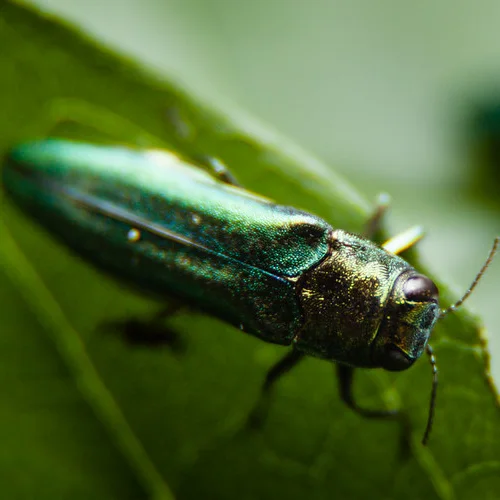The Emerald Ash Borer: Agrilus Planipennis
The Emerald Ash Borer (EAB), a destructive green beetle native to Asia, has become a significant concern for property owners residing in the United States over the past couple of decades. This invasive species wreaks havoc on ash trees throughout the continent, inflicting severe damage to urban and forested landscapes. EAB larvae tunnel beneath the bark of ash trees, disrupting the flow of nutrients and ultimately resulting in the tree’s death.
In response to the EAB threat, numerous protective measures have been tested and perfected. These include the removal and destruction of infested ash trees to prevent further spread of the beetle. In some cases, insecticides have been used to protect higher-value ash trees, although this approach is often limited and may have unforeseen environmental consequences. Researchers have also been exploring biological controls, such as the introduction of natural predators and parasitoids of EAB, to help manage the beetle’s populations more sustainably, however research is still ongoing.
Additionally, public awareness campaigns and education initiatives have been launched alongside various informative articles such as this in order to better notify communities about the signs and symptoms of EAB infestations, urging early detection and reporting. These efforts aim to engage citizens in protecting their local ash tree populations. The EAB serves as a stark reminder of the ecological and safety risks posed by invasive species and highlights the importance of proactive measures, research, and community involvement to safeguard our natural ecosystems and the valuable resources they provide.
